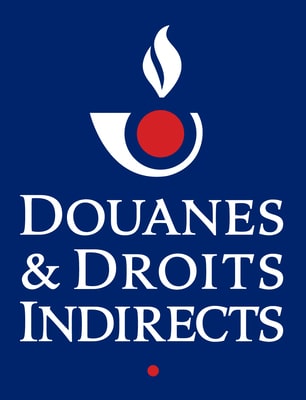Freight between Vietnam and France | Rates – Transit Times – Duties & Taxes
Importing goods between Vietnam and France is difficult to assess. That’s why we highly recommend that the important facts about importing between Vietnam and France are covered in this book, from transportation to regulations. Whether you are a large company, small business, startup or freelancer looking to export/import between Vietnam and France, you will benefit from the most suitable import for your needs if you follow our step-by-step instructions.
If you have any further questions, please contact one of our DocShipper professionals, who will assess your needs and recommend the most appropriate shipping method.
What is the best method to ship your products between Vietnam and France ?
When exporting goods from Vietnam to France, you have two options: sea freight or air freight. This information has been compiled by DocShipper to help you choose the best mode of transportation for your needs.
Docshipper Note:
Need assistance with your shipment? Dont hesitate to contact us even for a simple question. Choose the option that suits you
Live chat with an expert Chat us on WhatsApp Fill the form
Sea freight shipping between Vietnam and France
The main Vietnam seaports
Ho Chi Minh City’s port
On the Sai Gon river, HO CHI MINH CITY’S port is situated. It is a system that may be defined as a port network that serves as a swing bridge for products imported and exported from southern Vietnam. Several businesses, including mining and fruit and vegetable processing. It is the most important geographic site in the nation, accounting for roughly two-thirds of the country’s GDP.
Qui Nhon’s Port
Binh Dinh Province’s Qui Nhon port is a major port. It is the most accessible and nearby cities of Laos and Cambodia within the Binh Dinh region, with almost ten routes connecting by water between international ports like as Singapore, Japan, and Thailand.
Hai Phong’s Port
The port of Hai Phong (cng Hi Phng) is a collection of ports in the huge city of Haiphong that service the country’s north. It is the most major port in the country’s north, with three terminals.
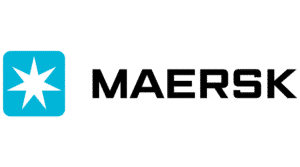

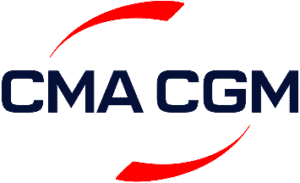
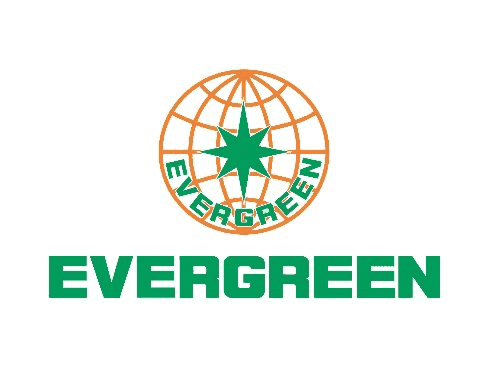
Transit time between French and Vietnam ports
At this time, it is impossible to know the exact time that your delivery by sea freight will take due to the situation (conflicts, port congestion…). For more information, we invite you to contact one of our experts by filling out this contact form.
DocShipper Alert :
A wrong route will waste time and additional costs. For advice on the best route for you and your cargo, based on your needs, request a free quote here.
Should I ship between Vietnam and France in a groupage or a whole container?
The following are three typical container sizes:
- The 20-foot container has a 33-m3 capacity.
- The 40-foot container has a 67-m3 capacity.
- The 40-foot HQ container has a 76-m3 capacity.
You may choose between two modes of transportation, which are described below:
LCL: Less than Container Load
Consolidation is a method of grouping contracts from various customers with the same port of arrival but with insufficient contents to completely fill a cargo box. This method allows you to pay only for the space you need for your business, rather than for the entire vessel. Therefore, this method is suitable for your smaller shipments.
If and only if the following criteria are met, this technique will pay off:
- You need your products consolidated into one shipment.
- Your shipments have a smaller cubic capacity than purchases from large suppliers.
- Air freight would not be more cost effective than ocean consolidation because your products are too large.
- When the items arrive at their destination, you want them to be distributed to a large number of people.
- This method is best suited for cargoes weighing more than 13/14 m3. Even if the cargo is only half full, the cost will be lower because the port will handle it less. This method is also safer.
FCL: Full Container Load
Full container load (FCL) is a delivery system in which a single customer leases the cargo from loading to delivery. Because handling is minimal, costs are lower with this design. In addition, the cargo is protected during its journey from origin to destination. This strategy is particularly advantageous when purchasing large quantities of goods.
Not only is the full container approach safe and secure, it is also significantly less expensive than importing a larger volume. It is also advantageous for a half-full shipment. The same strategy is particularly advantageous for shipments of 15 m3 or more, and is less expensive than the LCL method.
Air freight is more attractive than ocean freight for shipments under 2m3. In addition, air freight has shorter delivery times than ocean freight. Air freight takes less than a week to arrive door-to-door, but ocean freight takes about 40 days (LCL).
Advantages of a full container load (FCL)
- For large quantities, this is the most cost-effective option.
- The vessel is fully enclosed from the time it leaves the production site until it arrives at the final destination of the products in question.
- There is not much room for maneuver.
Disadvantages of full container load (FCL)
- For this form of transport, a comparable quantity of 15m3 is required.
- The journey takes a long time.
Advantages of Less than Container Load (LCL)
- The cost is determined by the amount of work performed.
- For small quantities, this is the most cost-effective mode of transportation.
- This transportation system has a great capacity to handle all kinds of imported goods.
Disadvantages of Less Than Container Load (LCL)
- Products are processed, which increases the risk of spoilage.
- Information must be delivered at the right time.
- Pallet transport is essential.
Special sea freight services
Roro
Roll-on/roll-off (Ro-Ro) boats are used to move cargo on rollers. Ro-Ro boats use their own tires to transport freight on and off the boat.
Ro-Ro freight requires less physical handling and is less likely to be damaged by sea or weather conditions since it is often carried in a single move using customised decks (from point of entry to point of destination). Goods are stored on the ship’s platforms during the journey.
This is the safest and most cost-effective way to move large or unusual cargo.
Reefer container
This technique of shipping in thermal containers was devised specifically for “delicate” goods and is often used for easily damaged foods or medications. These containers may alter the environment, humidity, and temperature in a variety of ways. They are available in a variety of sizes, enabling them to be tailored to the needs of providers.
OOG
Non-standard OOG vessels are divided into two categories:
Open-top ships are used to transport enormous, heavy cargoes of finished goods. Because it may be handled by a crane or overhead crane, this kind of transportation need close monitoring.
A “Flat Rack Container,” on the other hand, is a box with a level floor. They’re used to transport large, heavy, or big objects that are both wide and tall.
This vessel is used to carry products that cannot be sent in boxes. They also improve container security while also allowing for faster loading and unloading.
Bulk
The goods supplied on “container ships” are divided into two categories: “bulk” goods that are loaded into the ship’s cargo and “general cargo” goods. Ships are designed to transport a variety of cargo, including coal, minerals, and other goods.
DocShipper’s professionals are here to answer all your questions about heavy lifting or other types of cargo. They will answer all your questions and provide you with the best option for your needs.
How much does it cost to ship a container between Vietnam and France ?
It is impossible to give a price range quite simply because several factors must be taken into account, such as port of departure, port of arrival, carrier, type of goods, quantity and volume.
In addition, the prices are updated monthly, taking into account the market and its developments.
The volume and weight of items transported have an impact on the cost of products delivered by sea. To calculate this ratio, it is necessary to know the weight and volume of items.
The equivalence technique is used to determine the weight/volume ratio, which is comparable to “1 ton = 1 m3″.
Traditional transportation and consolidation into payment units are calculated using the weight/volume ratio calculation and assuming that 1 ton = 1 m3 (UP). In reality, there are two methods of defining these units of measure:
- In terms of volume (cubic meters) and mass (kilograms).
The value that benefits the container, i.e. the cargo, is always used, regardless of the measurement. This is the highest possible estimate.
If a cargo weighs 8 tons and has a capacity of 10 m3 , for example, the cost will be 10 UP. If, on the other hand, the cargo weighs 9 tons and has a volume of 4 m3, the cost is 9 UP.
The cost of a full container will be defined by the “ship’s package”, which will be influenced by the type of ship used as well as the delivery companies.
Supplements to the tariffs
Surcharges that are added to the carrier’s standard prices are called rate surcharges. These charges vary depending on the circumstances.
- BAF is an acronym for Bunker Adjustment Factor.
The Bunker Adjustment Factor is a surcharge applied to the base transportation cost. This surcharge has been in place since 1973, during the first oil crisis, and fluctuates with oil prices.
- CAF is an acronym for Currency Adjustment Factor.
The Currency Adjustment Factor (CAF) is a rate that is set by the freight and BAF. This rate varies with the value of the dollar. To protect themselves from currency fluctuations, companies choose to price their products in US dollars.
- THC is the abbreviation for Terminal Handling Charge.
The Terminal Handling Charge covers all expenses related to processing at the port, including the unloading and loading of products. The amount will remain fixed and equal to the cost of the container in the case of a vessel. The cost will be modified in case of consolidation, and the amount will be determined by the number of tons or m3.
- Congestion in the port
Companies collect a tax to compensate for the loss of revenue when one of their ships cannot unload its cargo due to congestion in the port. In this situation, the vessel may have to wait several days to arrive and unload.
- Demurrage
Demurrage is a charge levied by the charterer on the shipowner if the shipowner fails to meet the original loading or unloading deadline. This charge is imposed whenever the charterer exceeds the deadline, whether through his own fault or as a result of a strike or traffic jam. In shipping industry jargon, “demurrage” refers to the cost of hiring vessels for transportation while they are still in port.
Air freight shipping between Vietnam and France
Classic vs Express air freight
Air freight is used to move goods quickly to their final destination. In practice, it is the fastest mode of transport, since it takes only a few days to transfer products from Vietnam to France. Air freight is the most reliable mode of transportation. It is particularly suitable for high-value items, as well as publications, electronics, clothing and other items that deteriorate quickly at sea.
Airfreight Express shipments are transported in dedicated airfreight aircraft. Door-to-door delivery is provided by FedEx, TNT, UPS, DHL and other courier companies.
Express mail allows items to be sent in a short period of time, such as a week, and can be delivered to homes anywhere on the planet.
The user does not seem to need to manually clear lower value goods, as it is a complete service. This approach is particularly suitable for small volume goods (up to 1 m3) as it is much cheaper than sea freight such as LCL.
Traditional Air Freight: Using the available capacity of commercial aircraft, goods can be transported by commercial airlines such as Qatar Airways, Air France, Emirates, Air China.
Main airport in France
- CDG – Airport of Paris Charles de Gaulle
- ORY – Airport of Paris – Orly
- NCE – Airport of Nice Côte d’Azur
- LYS – Airport of Lyon Saint – Exupéry
- MRS – Airport of Marseille – Provence
- LIL – Airport of Lille – Lesquin
- NTE – Airport of Nantes – Atlantique
- TLS –Airport of Toulouse – Blagnac
- BOD – Airport of Bordeaux – Mérignac
Main airport in Vietnam
- SNG – Tân Sơn Nhất International Airport
- HAN – Nội Bài International Airport
- CXR – Cam Ranh International Airport
- DAD – Đà Nẵng International Airport
- VCA – Cần Thơ International Airport
- DLI – Liên Khương International Airport
- HUI – Phú Bài International Airport
- HPH – Cát Bi International Airport
- PQC – Phú Quốct International Airport
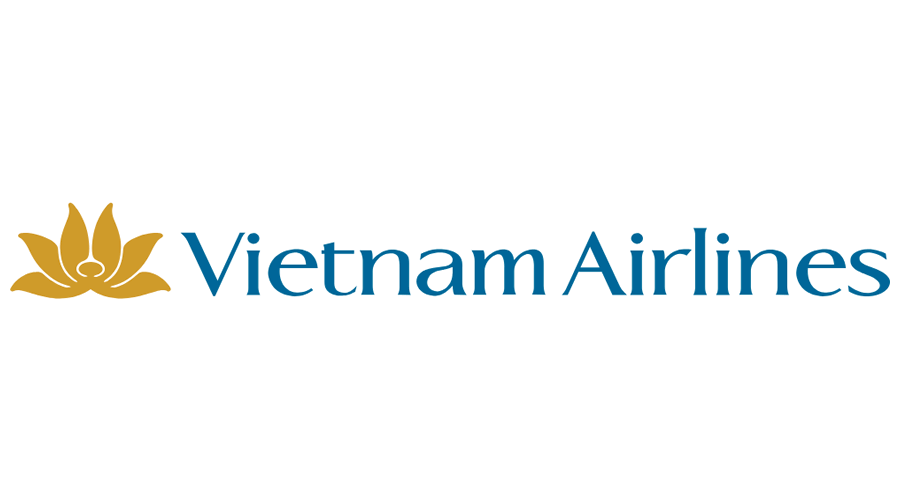
What are the advantages of air freight?
- Departure and arrival times are fairly consistent
Airplane departure and arrival times are fairly accurate since airlines schedule their routes months in advance. Since flights are generally scheduled every hour, there is no significant delay in transfer if a package “misses” its trip.
- The fastest mode of transportation
The airplane is without a doubt the most efficient means of transportation in terms of speed. In today’s commercial world, on-time delivery of your goods is crucial.
- By paying a small insurance premium, you could save a lot of money
The cost of air freight insurance is quite low. This is due to the fact that this means of transportation is only available for a limited time. Air freight, despite its high cost, saves money on insurance.
- Your goods can be delivered to almost any location
Your goods can be delivered to almost any destination on the planet. Most aircraft can serve almost the entire world with their extensive route network.
- Storage and warehousing constraints are eased
Air freight is more convenient in terms of storage. Since deliveries can be made in smaller quantities and more often, there is no need for a large warehouse. Goods also undergo fewer customs checks, tests and processing steps, and can be shipped within hours.
- Extremely secure, with little risk of theft or physical damage
Entry into terminals is strictly regulated, which greatly reduces the risk of loss or damage to products. As a result, air freight is extremely secure.
- Tracking
Courier companies often monitor air freight with a simple app, you can track your delivery from start to finish.
- Packaging is less necessary
Air freight requires less packaging in terms of volume. You’ll save time and money since you won’t have to pay for extra packaging like you would with ocean delivery.
It is essential to keep in mind that air freight is only a small part of the overall import and export process. The global transfer of goods, especially by air, requires not only legal procedures, but also the calculation of airport and transportation costs from point A to point B. You can count on our DocShipper pros to help you with all these tasks!
What is the cost of air freight between Vietnam and France?
The costs of this mode of transport, like those of maritime transport, are measured in taxable weight and multiplied by the rate per kilo.
The IATA weight scale is a degressive pricing system that allows a discount depending on the number of flights. This price varies by country, but is required in the vast majority of cases. A minimum tax rate applies to reduced exports.
Despite higher fixed costs, air cargo delivered on a commercial route by a conventional airline would cost less per kg than air cargo handled by “courier companies”. It should be remembered that, as with ocean freight, air freight prices are based on gross weight or volumetric weight, whichever is greater. This assumption applies to both conventional and expedited air freight.
How to calculate the volumetric weight of your shipment?
The rule of correspondence in case of air freight express is the following: 1 ton for 5 m3, i.e. a weight/volume ratio of 1 for 5. For example, 1 m3 is equivalent to 200 kilograms (1:5).
The general rule for conventional air freight is 1 ton per 6 m3, i.e., a weight/volume ratio of 1:6, with gross weight charges for ratios less than or equal to 1:6. In this example, the actual volume is divided by 6 to obtain a volumetric weight that can be used as a reference for pricing. For example, 1 m3 is equivalent to 167 kg (1:6).
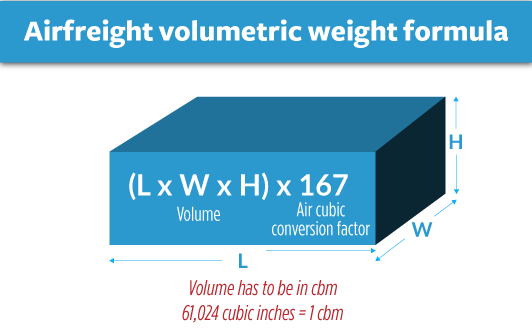

FNM tip :
If you are interested in this means of transport, you have the possibility to contact one of our specialists here.

Customs clearance in France for goods imported between Vietnam and France
Customs Value
The customs value, sometimes abbreviated to CIF value, is the sum of all incidental transit charges at the EU border, in addition to the cost of the items. Regardless of the country of delivery, the customs cost will be the same as the cost of all items upon arrival in the EU.
This customs value will be used as the basis for calculating the customs charges.
The monetary value
The “mise à la consommation” (MAC) is a method of calculating and collecting VAT in France, based on the amount of the initial rental price, also called the fiscal value.
The following formula is used to calculate the VAT:
- In addition to VAT, there is a levy, taxes and other fees. The calculation of VAT includes customs fees as well as any other relevant national taxes.
- Until the items reach their final destination in France, additional costs such as packaging, storage, transportation and insurance are required.
How to calculate customs duties and taxes?
To know how much you will have to pay in total, you need to know how much tax and duty will be applied to the items you want to import.
The first step is to determine the “HS code” or tariff category of the items.
The customs value of the items, the origin of the products and the HS code of the products must be combined to determine the customs procedure.
For imported and exported commodities from ASEAN member nations, Vietnam has adopted the Harmonized Tariff System (HS) (ASEAN). You may now discover what an HS code is, what it stands for, and how it is organized.
The HS code, or harmonized categorization system, is presently used in over 205 countries and covers 97 percent of worldwide commerce. This approach enables the systematic establishment of categories for all countries that utilize it. Each product that is part of international trade items is given a number. As a result, it is feasible to compare trade flows using valuable data such as statistics and offers.
Does Docshipper charge customs duties?
DocShipper does not charge customs fees. All documents, including European customs documents, are returned to you with a statement that we do not charge a fee.
Because our professionals produce the appropriate documents for you to present to customs, DocShipper collects the customs clearance fees. The government collects the taxes and duties.
Customs Procedures and Contacts
Docshipper Tip :
In case you have any doubts or any questions, do not hesitate to ask our experts for advice.
Required documents for customs clearance
Packing list
The packing list is a document created by carriers for various supply chain partners. This official document, which is required for all sea and air shipments, lists all product and packaging details for each shipment.
Bill of Lading
The Bill of Lading is a shipping document that certifies that the exporter has shipped the items listed on the document. This formal agreement defines the terms and conditions of the contracts between the carrier and the shipping company in charge of the goods. For example, the price of the items is disclosed, as well as the names of the many locations to which the products are shipped.
The bill of lading is a legally binding document that must be followed exactly as written. It also includes all the information necessary to properly manage and report the cargo.
The air cargo variant of this document is called an Air Waybill (AWB).
Certificate of Origin
The certificate of origin guarantees the origin of the items being transported. This document, necessary in international trade, specifies the country of manufacture, which should not be confused with the country of origin of the goods. It is therefore the nation in which the articles were created that is specified in this official document. This document is necessary to benefit from reduced customs taxes on certain types of goods.
Original Invoice
You must receive an official invoice to clear your goods through customs in Vietnam and France. It is essential to verify that the invoice number and the packing list number are identical.
Prohibited or Restricted Products
Licenses and/or permits are required for certain goods and/or objects, as well as specific and severe import restrictions. Some items are even prohibited from entering France or Europe. To check if your product is legal on the national or continental territory, consult the list below:
Restricted products
- Animals
- Agricultural products
- Alcohol, Tobacco
- Chemical product
- Livestock feed
- Food supplements
- Pharmaceutical products
Prohibited products
- Explosives
- Drugs
- Weapons
- Pornography
- Counterfeit products (textiles, accessories, medicines, electronics, etc.)
- Ivory
Please contact our DocShipper professionals if you want to import products from any of the above lists! They will walk you through the whole procedure.
DocShipper Advice :
More than 10 years of expertise on the Asian continent, allows us to offer tailor-made freight solutions at more than competitive prices. Do not hesitate to contact our dedicated specialists for more information on your transfer, we are always happy to serve and disseminate our knowledge, we respond within 24 hours! Contact us.
Additional logistics services
Discover DocShipper's holistic approach to supply chain management, covering not just shipping and customs, but a full suite of additional logistics services tailored to streamline your global operations effectively.
Warehousing and storage
Securing a reliable warehouse in a foreign land could be a mountain to climb. Your goods, especially temperature-sensitive ones, need perfect conditions to stay market-ready. Imagine the peace of mind that a well-managed, temperature-controlled storage would bring! Your quest for such reliable warehousing ends here. More info on our dedicated page: Warehousing.
Packaging and repackaging
Protecting your products for the journey from China to Thailand requires expert packing and repackaging. Looking for items that defy the odds? Our network of trustworthy agents can handle everything from electronics to fragile ceramics. They ensure safe transport, perfect for businesses shipping diverse goods. Want to dive deeper? Find more at our dedicated page: Freight Packaging
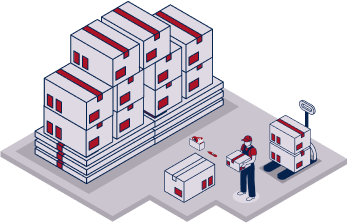
Cargo insurance
Cargo insurance acts as your safety net during your shipping journey. Ever considered a scenario where your shipment gets damaged by incidents other than fire? This is where cargo insurance comes into play, covering physical losses or damages from external causes. Think of a heavy storm tossing your ocean freight; cargo insurance has your back! Our customized coverage mitigates such risks. Need more insights? Visit our dedicated page: Cargo Insurance.
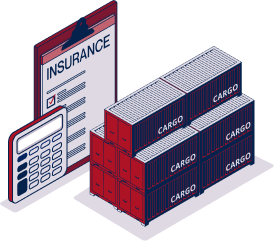
Supplier Management (Sourcing)
Looking to manufacture in Asia or East Europe? The supplier management service from DocShipper seamlessly handles it all - right from finding reliable suppliers to overseeing the entire procurement process. Forget language limitations or complex sourcing steps - DocShipper guides you through it all. For instance, if you strive to create a new toy line in China, we connect you with the best manufacturers and handle all purchasing details. More info on our dedicated page: Sourcing services
Personal effects shipping
Moving special items from China to Thailand? Your precious or oversized belongings deserve safe and efficient shipping. That's where we come in, with expertise in handling fragile and bulky cargo with utmost care. Consider the time we secured a customer's antique Chinese vase; it arrived in Bangkok unscathed! Craving more insights? More info on our dedicated page: Shipping Personal Belongings.
Quality Control
Ensuring the excellence of your products is our priority. Our Quality Control service eliminates your worries over manufacturing errors in your China-to-Thailand shipping. Imagine unboxing your Thai order only to find unsuitable items - a nightmare avoided with our pre-shipment inspection. Don't gamble with your business reputation; let us protect it. More info on our dedicated page: Quality Inspection
Product compliance services
Ensuring your merchandise arrives safely is essential, but have you considered if it meets local compliance standards? Our Product Compliance Services handle this crucial aspect, conducting rigorous laboratory tests for certification and verifying that your goods abide by the destination's regulations. Suppose true peace of mind in international shipping means no surprises at customs. In that case, our specialized expertise might be invaluable to you. More info on our dedicated page: Product compliance services
FAQ | Freight between Vietnam and France | Rates – Transit times – Duties & Taxes – Advices
The best way to travel between Vietnam and Thailand depends on several factors. These factors are the nature of the goods, the quantity, the size, the route, the point of departure and the point of arrival ... By taking all this into account, it will then be possible to suggest the best means of transport for you.
LTL trucking which implies that the load will not fill a full truck. With an LTL shipment, you will only pay for the amount of truck space you occupy. Great choice for small businesses that don't do large shipments and are looking for a more economical option. FTL trucking means, is usually done with one load on its own that will occupy an entire vehicle with ten or more pallets to deliver, if your shipment poses a significant risk, FTL may be the best choice.
The CO guarantees that the goods sent have an origin and come from a traceable place. This document can be issued by a notary office or an administration. It is important that you have it in order to take advantage of the Common Effective Preferential Tariff (CETP) that exists between the two nations.
These taxes are customs charges applied by the country on foreign goods crossing its customs territory. This taxation is also called transit tariff.
Docshipper offers you a storage and packaging service : As a company with experience, we have our own warehouse sites, which we offer solutions to more easily check your goods at any time, and so avoid unpleasant surprises.
